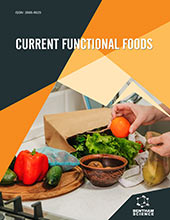
Full text loading...
Murici is valued by the local population for its healing, anti-inflammatory, and antioxidant properties, which are attributed to its phenolic compounds and carotenoids, although its quality and properties are not well-known.
This research aimed to evaluate the quality of murici pulp (Byrsonima spp.) commercialized in some places of Santarém, Pará, Brazil.
Murici pulp samples were collected in Santarém and Curuá, PA, between October 2022 and January 2023. The samples were packed in plastic containers and stored in a refrigerated laboratory. Physicochemical analyses included pH, titratable acidity, total soluble solids, ash content, moisture, phenolic compounds, proteins, and sugars, following standard methods. Antioxidant activity was measured using DPPH, ABTS, and FRAP assays.
Murici pulp pH ranged from 3.2 to 3.6, all within legal limits, indicating higher acidity suitable for consumption. Titratable acidity ranged from 15.89 to 63.57 meq kg−1, meeting regulatory standards. Ash content varied from 0.15% to 0.86%, moisture from 75.11% to 83.58%, and phenolic compounds from 2.73 to 3.64 mg GA g−1. Significant statistical differences were observed in all analyses, highlighting the nutritional and antioxidant potential of the pulp.
Murici pulp samples showed low sugar and starch concentrations but high total acidity and antioxidant capacity (DPPH, ABTS, and FRAP). pH levels met legal standards, with significant variations due to ripeness and environmental factors. The study underscores murici's health benefits and quality variations influenced by environmental conditions and processing factors.

Article metrics loading...

Full text loading...
References


Data & Media loading...

